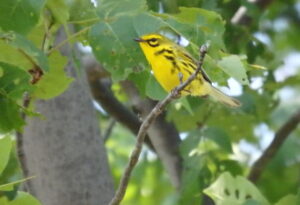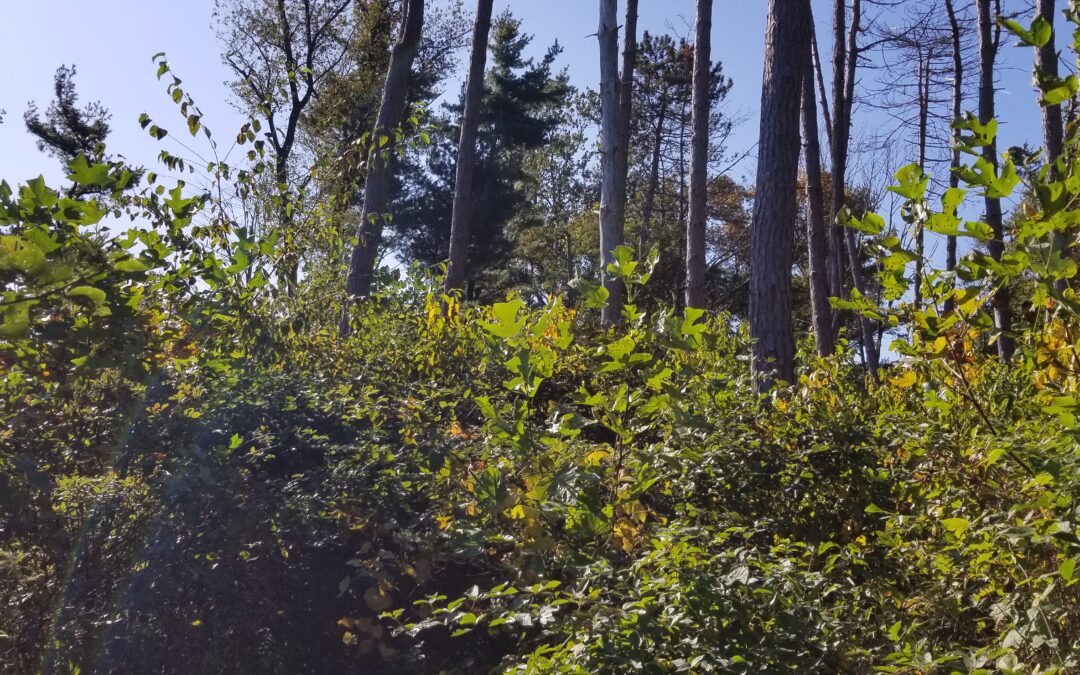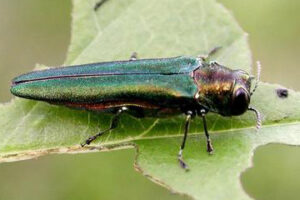Merrill Creek Reservoir implements ecological forest stewardship under our State approved Forest Stewardship Plan (FSP) (for a list of what must be included and address in a FSP please see this link). Based on data collection, on average our forests at Merrill Creek are approximately 70-90 years old (which is typical for much of NJ’s forests statewide as outlined in the NJDEP 2020 Forest Action Plan). To create a more diversified age-class of forest that will help with creating improved wildlife species habitat and forest resilience, MCR’s plan calls for activities that will increase young forest habitat as well as help facilitate Old Growth forest characteristics. However, when it comes to understanding what Old Growth really means, one must dive a little deeper into forest functionality and characteristics to truly understand what is Old Growth, because simply looking at large trees does not necessarily mean its Old Growth.
Does Merrill Creek Reservoir contain Old Growth Forest? The answer is, NO. However, through implementation of our State Approved Forest Stewardship Plan we are creating conditions that will lend to a diversity of forest age classes, Young to Old, that will benefit ecological resources here on the property, the region, the wildlife that lives here, as well as, our natural heritage in the long run. The key here is thinking long-term (which means, after some conservation practices are complete it may not look like what you may have gotten used to over the years – but work we are doing now is intended to create, in the short-term, critical habitat for some species that are in decline now, as well as, help mitigate impacts from forest stressors generations from now).
Additionally, when it comes to thinking about forest stewardship practices, remember, not all situations and properties are the same and understanding the stressors on a forest is important to forest stewardship planning objectives (short and long term), timing of work and the best management practices that are available to implement the work. To many, the simple idea of cutting a tree or doing conservation work at certain times of the year may seem counterintuitive to improving forest functionality as for decades a “preserve and do-nothing, let nature take its course” mentality was what many of us grew up with in the past 50 years or so. However, we have learned a lot through science over the last several decades and in many cases in NJ, doing nothing does not always work to achieve desired conservation goals, including reaching old growth characteristics, as outlined by Mary Byrd Davis, a researcher and conservationist, in her book, Old Growth in the East (revised in 2003).
Again, ecological forestry work at MCR is not done on a whim, meaning, years of data collection, planning and implementation (yes, this is not new, MCR has been

The Prairie Warbler is a species found at MCR but it is also a declining species that benefits from creating young forest habitat. Photo by John Parke
implementing forest prescriptions, including harvesting trees here under a State approved plan, since 2009) which are creating conditions that will lend to a diversity of forest age classes, that will provide ecological services here on the property and create forest resiliency through a carbon defense strategy to help mitigate climate change issues. One of those benefits will be diversified habitat which will provide specific life-cycle components for many wildlife species, in particular for birds. A multitude of scientific research has shown that a forest with diversified age classes, (which contain a diversity of vegetation types and structure), is essential for many birds that use one type of forest for breeding (nesting), but also use other types of forest for courtship, raising young and foraging.
Additionally, one of the issues that our FSP addresses is increasing tree species diversity which also helps mitigate single species collapses (which are large-carbon emitters) due to disease and pests. Unfortunately, at MCR we do have impacts to our forests from invasive species such as: Emerald Ash Boer that kill ash trees, European Gypsy Moth (now renamed the Spongy Moth) that kill oak trees, Beech Bark Disease which is a combination of a beech scale insect from Europe and several fungi that kill American beech trees, Spotted-lantern Fly that kill grape vines, walnut and sumac trees and Asian woolly adelgid that kill Eastern hemlock trees. We also have to plan for and address other impacts associated with climate change especially weather and temperature patterns changing. Changes to regional weather and temperature patterns can alter the frequency and intensity of forest disturbances such as insect outbreaks, invasive vegetation species, wildfires, and storms. These changes can also lead to diminished natural resources – such as water availability (drought). These disturbances can reduce forest productivity and change the distribution of vegetation species which can also alter entire ecosystem species composition and food-chain dynamics.
Lastly, we do understand that conservation forestry practices that involve harvest (logging) can be jarring to some members of the public, and many questions (and rumors, misinformation, speculation and conspiracy theories, etc.) arise from this work from the public, which typically lead to the question, “Why can’t you just leave it alone and allow for passive management so trees will just keep growing?” While preserving sites across NJ and allowing for only passive management (reserves) may be appropriate for some portions of the landscape, a blanket application of this approach does not guarantee that all forests will develop into functional old growth, given the increasingly severe stressors that are impacting our forests (as outlined in the previous paragraphs). In fact, as most of NJ’s forests have practiced “proforestation” (a do-nothing -hands-off approach) by default over the decades, the results have led to numerous wildlife species declines, and in some cases, species extirpation from NJ. There are always trade-offs when balancing multifaceted environmental issues, but it is important to understand that a blanket (“one-size fits all”) approach to ecological issues is extremely short-sighted and potentially dangerous to ecosystem functionality. We won’t stop climate change, but we can manage habitats by BOTH passive and active, where appropriate, as means to mitigate climate impacts so we are able to give species time to adapt.
That said, below are links to a series of blogs from NJ Audubon that may help explain forest conditions and case studies in NJ, as forest ecology is very complex, dynamic and definitely not as “clear-cut” as many think.
What does Old Growth Really Mean – It Depends – An Overview installment 1 of 6
What does Old Growth Really Mean – It Depends – Old Growth in NJ? installment 2 of 6
What does Old Growth Really Mean – It Depends – Bear Swamp Forest installment 5 of 6
What does Old Growth Really Mean – It Depends – Bringing it all Together installment 6 of 6


